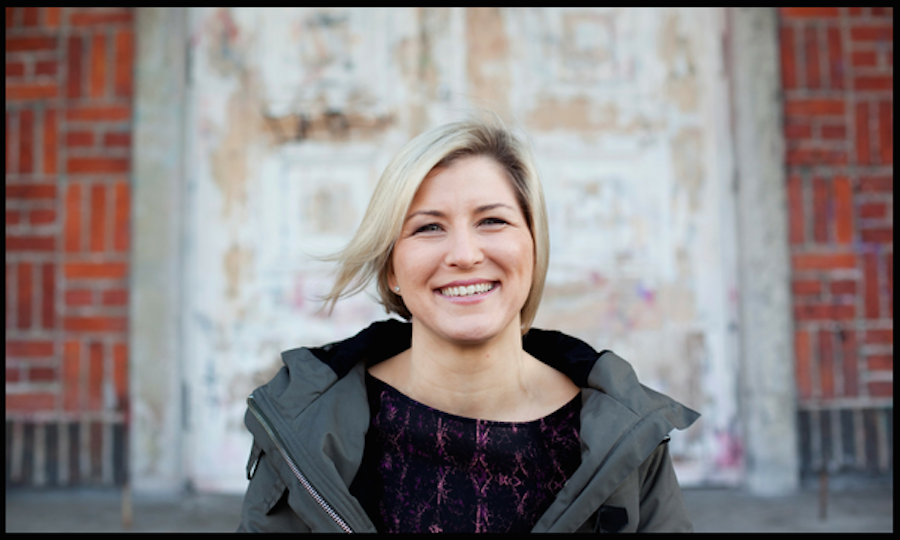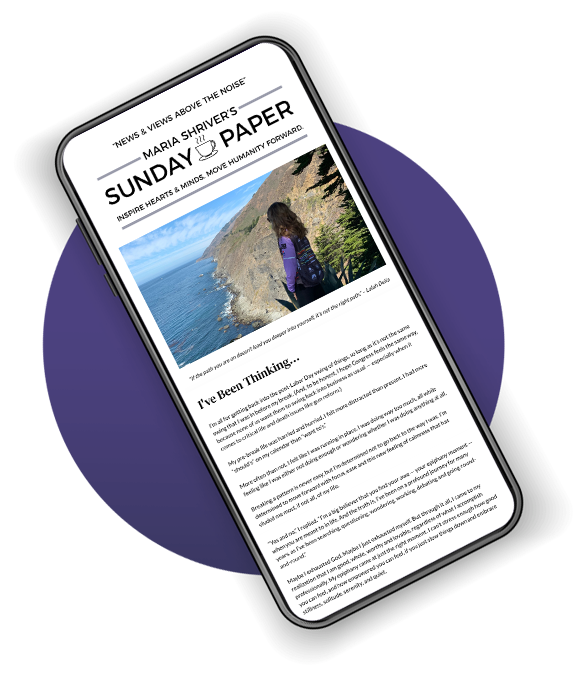‘Sisu’ and Why Finland Is One of the Happiest Places on Earth

Framing sisu within the context of my own quest for a healthier and ultimately happier life greatly interests me. I believe that tapping into a reserve of grit or resilience that I didn’t know I had— whether by making the effort to go for a cold water swim each morning or getting on my bike whatever the weather— has been fundamental in providing me with the tools to boost my mental and physical well- being. It has enabled me to move away from a “learned helplessness,” an attitude where I thought there was little I could do but accept myself as a slightly lethargic depressive who sometimes had difficulty getting out of bed in the morning, and become someone who wakes up early to squeeze in a dip before the day starts.
In my search to better understand the concept of sisu, I have come up with a list of questions: Is sisu a mental power or muscle that you flex? Where does it come from? Is it a cultural construct, part of a country brand, or a slogan? Or, as I suspect, a sort of mind and body attitude that anyone, anywhere, can tap into?
In my quest to wrap my head around the term, I initially apply it liberally to cover a quality that I notice a great many Finns seem to share: a hardy, active, outdoors-in- any-weather, do-it-yourself approach to life.
Even when it comes to domestic chores such as house or window cleaning, which many people could easily afford to pay someone to do, it seems instead to be a source of personal pride and satisfaction to take on the task oneself.
I observe that this DIY approach also includes trying to fix things before rushing out to buy new ones, and taking on home renovations instead of contracting them out. Doing instead of buying.
As for this special hardiness, I notice that it appears to link into a kind of experiences-over-possessions attitude. For example, during a typical Monday lunch following the weekend, many of my coworkers talk about activities they undertook. Shopping or discussing material acquisitions rarely form the answer to the question “How was your weekend?” or “What did you do?” Instead, the most common responses include outdoor or nature-based activities, regardless of the weather or season. To say you have been in the woods picking berries and/or mushrooms; fishing at the cottage; swimming at the lake; skiing; or on a minibreak in Stockholm, Tallinn, London, or Berlin is a common reply.
It’s not that I wasn’t exposed to outdoorsy types growing up in Canada, but here in Finland daily doses of nature seem to form part of nearly everyone’s lexicon. This is in part a reflection of Finland’s relatively late urbanization during the 1950s and ’60s. Prior to the Second World War, 75 percent of Finns lived in rural areas; now almost 85 percent of the population lives in cities and urban areas. But more than that, a great love and appreciation of the outdoors seems to be in the DNA.
Nordic practicality. As time goes on, when I return to North America on visits, I’m struck by how complicated urban life seems, and on so many levels. On a continent that advertises endless choice, it seems to me that some people make few natural lifestyle choices.
On a rainy December day in Vancouver, I watch as my friend’s active six-year-old son practically climbs the walls of their townhouse. When my friend says that perhaps he needs medication to help him calm down, I look at her in disbelief and as tactfully as I can suggest that he probably just needs to go outside and run and jump and play. “It’s normal for a young child to be full of energy,” I say, trying to reassure her. Her response? She doesn’t want to go outside because they would get wet. From a Nordic perspective, it seems odd to me that her first thought was medication, not exercise or activity, or investing in good raingear. Especially given that Vancouver is one of Canada’s rainiest cities, with upwards of 150 days of rain a year on average.
In another instance in the same city, I’m waiting for a dear friend in a café. When he arrives out of breath, complaining about traffic and how hard it was to find a parking spot, my first thought is to ask him why he didn’t walk or hop on a bus as he lives only a few kilometers away.
I don’t ask the question, partly because I fear it will sound condescending, but partly because I think I already know the answer. We both grew up at a time in North America, in the late 1980s and ’90s, when owning a car was (and in many places still is) an extension of your personality, a fundamental right. The idea of not driving a car just isn’t entertained.
From my new viewpoint it also seems to me that many people have an overly complicated and costly relationship to other areas of well-being such as diet and exercise.
A friend in New York is always experimenting with new diets ranging from low-carb to high-carb to no-carb or whatever the trend of the moment is. One of the most bizarre is a powdered-soup-only diet delivered weekly to her door by courier in special, just-add-water packs. Yet another friend’s diets have ranged from an all-peanut one to a chicken-only diet. Add to that colonic irrigation, celebrity-endorsed fasts, and all manner of detox cleanses.
Every time one of my friends enthuses about the latest diet—which this time is going to change everything—I find myself thinking the same thing: “Your diet sounds unhealthy and impossible to stick to. Why not just eat a sensible balanced diet and cut out all the biscuits and cakes and sugary drinks?”
In stark contrast, many of the Scandinavians I meet seem to share a simple, few-frills, commonsense approach to health and well- being. Of course there are people who undertake extreme diets and exercise programs, but often when a Finnish colleague or friend has lost weight and is asked how he or she did it, the answer runs along the lines of: “I cut out extra desserts and late-night snacking, ate more vegetables, and became more active by taking up swimming or going for more walks.” Rarely do people say they have been on the diet or exercise fad of the moment.
This is not to suggest that there is anything bad in finding an exercise or diet program that works and is enjoyable. But it seems that a great many have outsourced their well- being to expensive, time- consuming, hard-to-stick-to programs that don’t work and may actually not be that healthy.
There are fewer very overweight people in Finland and next door in Sweden and in Norway, compared with some other parts of the developed world. As of 2014, more than 1.9 billion adults worldwide are now classified as overweight, according to the World Health Organization, which has called it an epidemic.
This isn’t to suggest that slim equals healthy, but there are real health risks associated with carrying around excess weight, including high blood pressure, which can lead to coronary heart disease, type 2 diabetes, and other lifestyle illnesses.
In Finland, I come to notice all kinds of positive attitudes that relate to well- being and body image.
The Scandinavians seem to have far fewer hang-ups about their bodies. Nordic men or women may not be entirely happy with their figures, but they don’t seem to be waging a war on their bodies like many North Americans and Brits I’ve met who try to follow the latest extreme diets and exercise programs.
Perhaps Finns feel more at ease with their body image because they’ve grown up in a sauna culture. The sauna, essentially a steam bath, also known as the “poor man’s pharmacy,” is the ultimate in relaxation and cleansing—you sweat out toxins while you sit in the warm steam.
In ancient times, the sauna was a revered, pure place. Women gave birth there, since the heat made it one of the most sterile places to deliver a baby in those days. Studies have shown that the Finnish sauna, in addition to soothing and relaxing muscles by releasing endorphins, can relieve pain and help to prevent dementia.
What strikes me is that the sauna is also a great equalizer. If you grow up seeing people naked, nudity is not such a big deal. You also grow up with the knowledge that bodies come in all sizes and shapes. That’s normal, not the stylized images of “perfect” bodies as seen on social media or in glossy magazines.
There is another significant aspect of the Finnish sauna—equality. There’s no VIP system. In a way, the sauna represents the nonhierarchical nature of Nordic society: former presidents sit beside shop clerks. A popular Finnish quote sums this up: “All men are created equal; but nowhere more than in a sauna.”
I also observe the very strong connection with nature that people in the Nordics have. It seems that almost everyone I meet is culturally programmed to spend time in nature year-round, particularly in summer and winter, to rest, restore, and recharge, whether at the family cottage or someone else’s.
READ MORE STORIES THAT MOVE HUMANITY FORWARD
READ MORE STORIES THAT MOVE HUMANITY FORWARD
SIGN UP FOR MARIA’S SUNDAY PAPER


